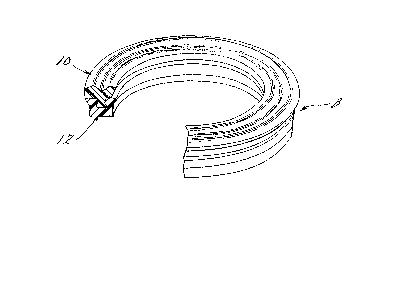Some of the information on this Web page has been provided by external sources. The Government of Canada is not responsible for the accuracy, reliability or currency of the information supplied by external sources. Users wishing to rely upon this information should consult directly with the source of the information. Content provided by external sources is not subject to official languages, privacy and accessibility requirements.
Any discrepancies in the text and image of the Claims and Abstract are due to differing posting times. Text of the Claims and Abstract are posted:
| (12) Patent: | (11) CA 1274864 |
|---|---|
| (21) Application Number: | 1274864 |
| (54) English Title: | SEAL |
| (54) French Title: | JOINT D'ETANCHEITE |
| Status: | Term Expired - Post Grant |
| (51) International Patent Classification (IPC): |
|
|---|---|
| (72) Inventors : |
|
| (73) Owners : |
|
| (71) Applicants : |
|
| (74) Agent: | MACRAE & CO. |
| (74) Associate agent: | |
| (45) Issued: | 1990-10-02 |
| (22) Filed Date: | 1986-10-15 |
| Availability of licence: | N/A |
| Dedicated to the Public: | N/A |
| (25) Language of filing: | English |
| Patent Cooperation Treaty (PCT): | No |
|---|
| (30) Application Priority Data: | ||||||
|---|---|---|---|---|---|---|
|
ABSTRACT
A composite seal comprising a primary seal
element and a secondary sealing element. The primary
seal element is more readily deformable than the secon-
dary seal element. Juxtaposed surfaces of the seal
elements are configured to minimize extrusion of the
primary seal element past the secondary seal element.
Note: Claims are shown in the official language in which they were submitted.
Note: Descriptions are shown in the official language in which they were submitted.

2024-08-01:As part of the Next Generation Patents (NGP) transition, the Canadian Patents Database (CPD) now contains a more detailed Event History, which replicates the Event Log of our new back-office solution.
Please note that "Inactive:" events refers to events no longer in use in our new back-office solution.
For a clearer understanding of the status of the application/patent presented on this page, the site Disclaimer , as well as the definitions for Patent , Event History , Maintenance Fee and Payment History should be consulted.
| Description | Date |
|---|---|
| Inactive: Expired (old Act Patent) latest possible expiry date | 2007-10-02 |
| Inactive: IPC from MCD | 2006-03-11 |
| Inactive: Late MF processed | 2005-10-19 |
| Letter Sent | 2005-10-03 |
| Inactive: Late MF processed | 2004-10-21 |
| Letter Sent | 2004-10-04 |
| Inactive: Late MF processed | 2003-10-21 |
| Inactive: Late MF processed | 2001-12-12 |
| Letter Sent | 2001-10-02 |
| Grant by Issuance | 1990-10-02 |
There is no abandonment history.
| Fee Type | Anniversary Year | Due Date | Paid Date |
|---|---|---|---|
| MF (category 1, 7th anniv.) - standard | 1997-10-02 | 1997-09-11 | |
| MF (category 1, 8th anniv.) - standard | 1998-10-02 | 1998-10-01 | |
| MF (category 1, 9th anniv.) - standard | 1999-10-04 | 1999-09-29 | |
| MF (category 1, 10th anniv.) - standard | 2000-10-02 | 2000-09-19 | |
| MF (category 1, 11th anniv.) - standard | 2001-10-02 | 2001-12-12 | |
| Reversal of deemed expiry | 2005-10-03 | 2001-12-12 | |
| MF (category 1, 12th anniv.) - standard | 2002-10-02 | 2002-09-19 | |
| Reversal of deemed expiry | 2005-10-03 | 2003-10-21 | |
| MF (category 1, 13th anniv.) - standard | 2003-10-02 | 2003-10-21 | |
| MF (category 1, 14th anniv.) - standard | 2004-10-04 | 2004-10-21 | |
| Reversal of deemed expiry | 2005-10-03 | 2004-10-21 | |
| Reversal of deemed expiry | 2005-10-03 | 2005-10-19 | |
| MF (category 1, 15th anniv.) - standard | 2005-10-03 | 2005-10-19 | |
| MF (category 1, 16th anniv.) - standard | 2006-10-02 | 2006-09-18 |
Note: Records showing the ownership history in alphabetical order.
| Current Owners on Record |
|---|
| MACROTECH POLISEAL, INC. |
| Past Owners on Record |
|---|
| GERALD H. BECK |